I’d been meaning to get back into semi-serious bike riding for a while but a diagnosis of spinal stenosis, which doesn’t affect everyday life too much but which is damn sore if you’re pressing hard on the pedals, made it difficult. Then came the, ‘Eureka!’ moment – an e-Bike. I’m lucky where I stay; just yards from the Fife Coastal Path, so an ‘e-Gravel Bike’ was the choice.
I plumped for the Ribble AL-e machine, unlike many e-Bikes which have lumps, bumps and protuberances the Ribble has the motor in the rear hub and the battery within the down tube.
To the casual observer, apart from what could be an ejector seat button on the top tube it’s indistinguishable from a normal machine.
The Coastal Path is for pedestrians and cyclists only, running right round the Coast of the peninsula which forms the Kingdom of Fife, 117 miles from Kincardine on the River Forth to Newburgh on the River Tay.
I hope to ride all of it over time, not in one go, I’m too old for that, rather a section at a time.
It makes sense to start in Kirkcaldy, not so far from where I live in Dysart.
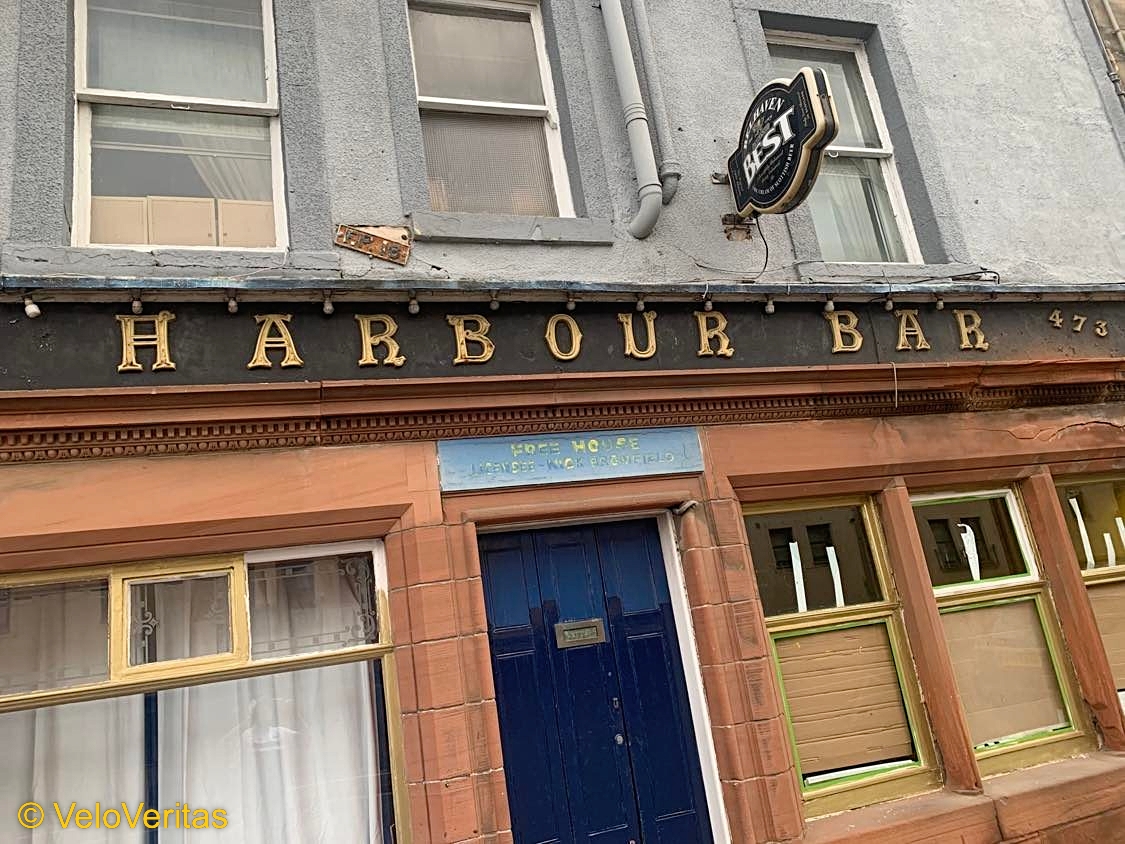
Where else but at of my favourite bars; ‘The Harbour’ has just changed ownership, the previous landlord, Nick died last year, sadly.
The new owner tells me that he’s going large on Belgian beers, our first visit is scheduled for tonight.
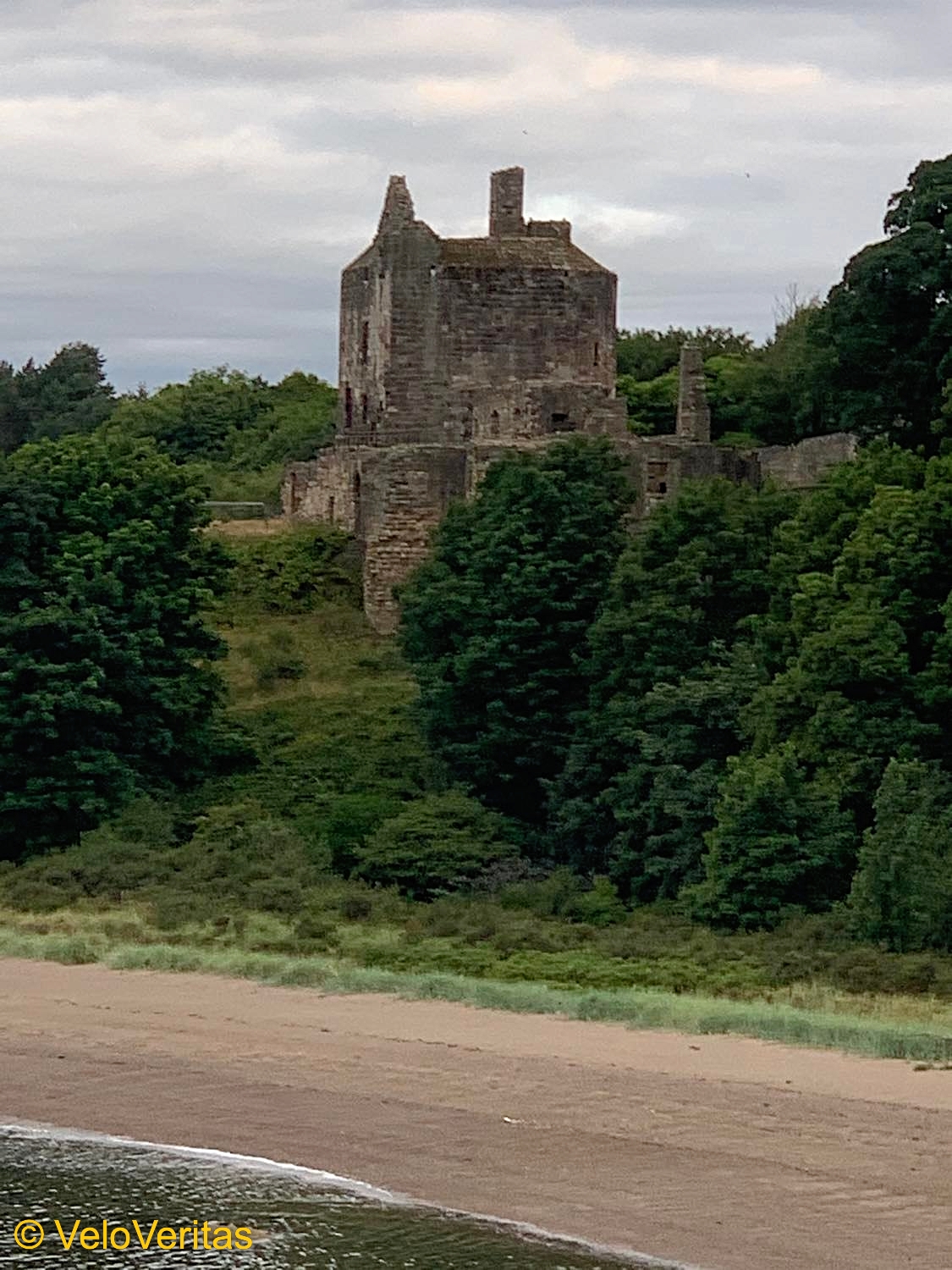
First stop after a short section of gravel single track around the back of Kirkcaldy Harbour is Ravenscraig Castle, a fortress from 1460, on a rock outcrop with a commanding view of the Forth.
It was one of the first fortresses built to withstand cannon fire with walls up to almost four metres thick.
Next up was a trudge along the beach, pushing the bike, the sand was soft and one has to wonder how Freddy Maertens used to do his training runs in the sand.
I love the Ribble but light it is not – however, when you push the button up to max of the three boost levels on tarmac or gravel the weight becomes irrelevant.
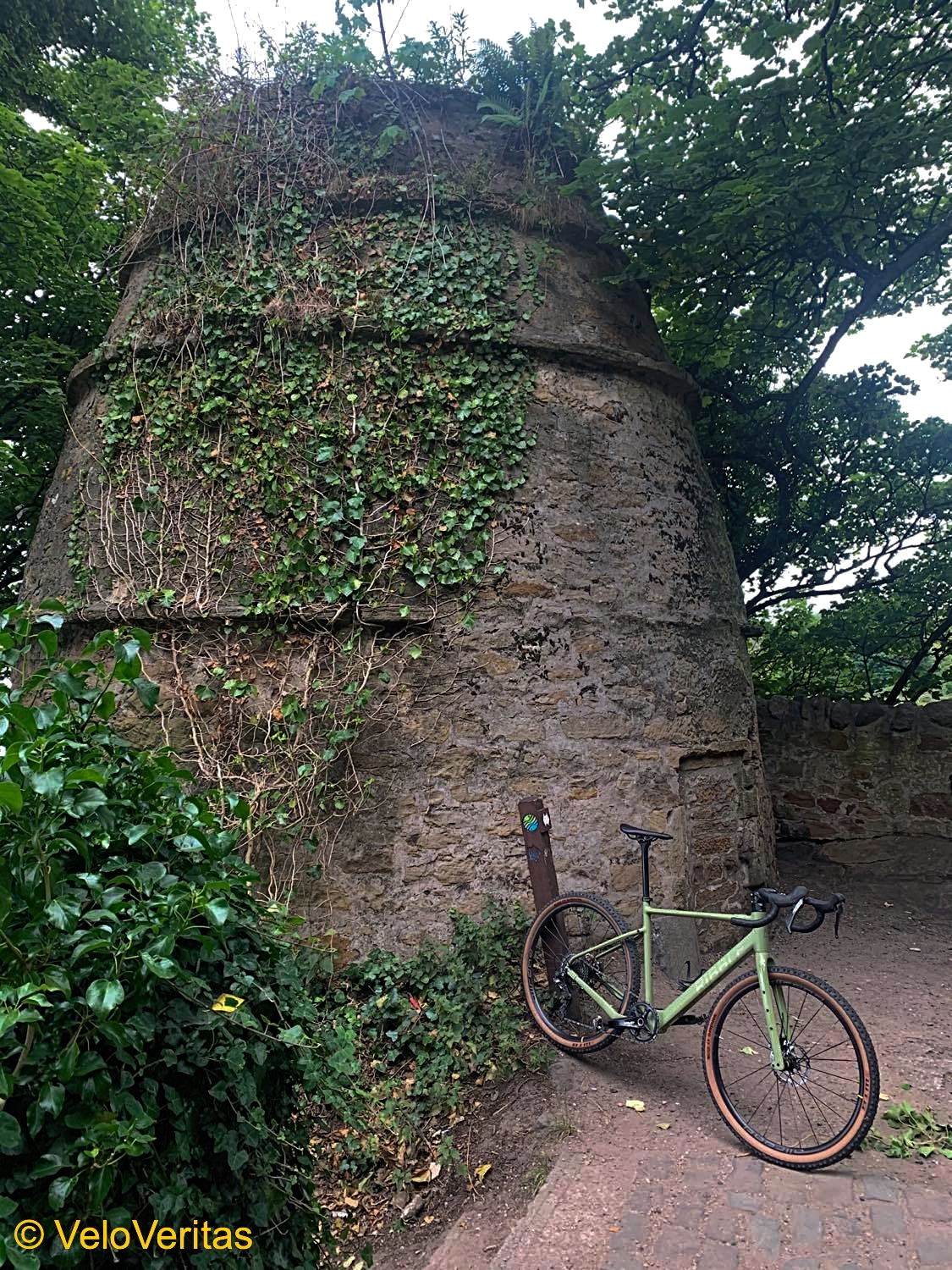
Back in the day of the castle there were no supermarkets so you had to make your own arrangements for victuals.
Ravenscraig had a ‘beehive doocot’ – that’s ‘dovecote’ in English.
Pigeons were encouraged to nest in there and became a source of eggs and meat for the occupants of the castle.
The horizontal ridges running around the doocot were to stop rats running up the walls and getting in to ravage the doos.
Gravel paths now, the Ribble’s natural environment which it handles with aplomb, those big 47 mm tyres are very grippy but responsive.
The path runs through Ravenscraig Park, where the perimeter wall follows the coast line, every cove and promontory.
There are two stories about the wall, one is that it was built by the Earl of Roslyn to prevent miners taking shortcuts through what back then was his private park.
But the other is that he commissioned it to provide work for locals in a time of need.
Into my home village of Dysart now, if you’re an ‘Outlander’ fan then you’ll recognise the setting, it featured in the series as a French sea port.
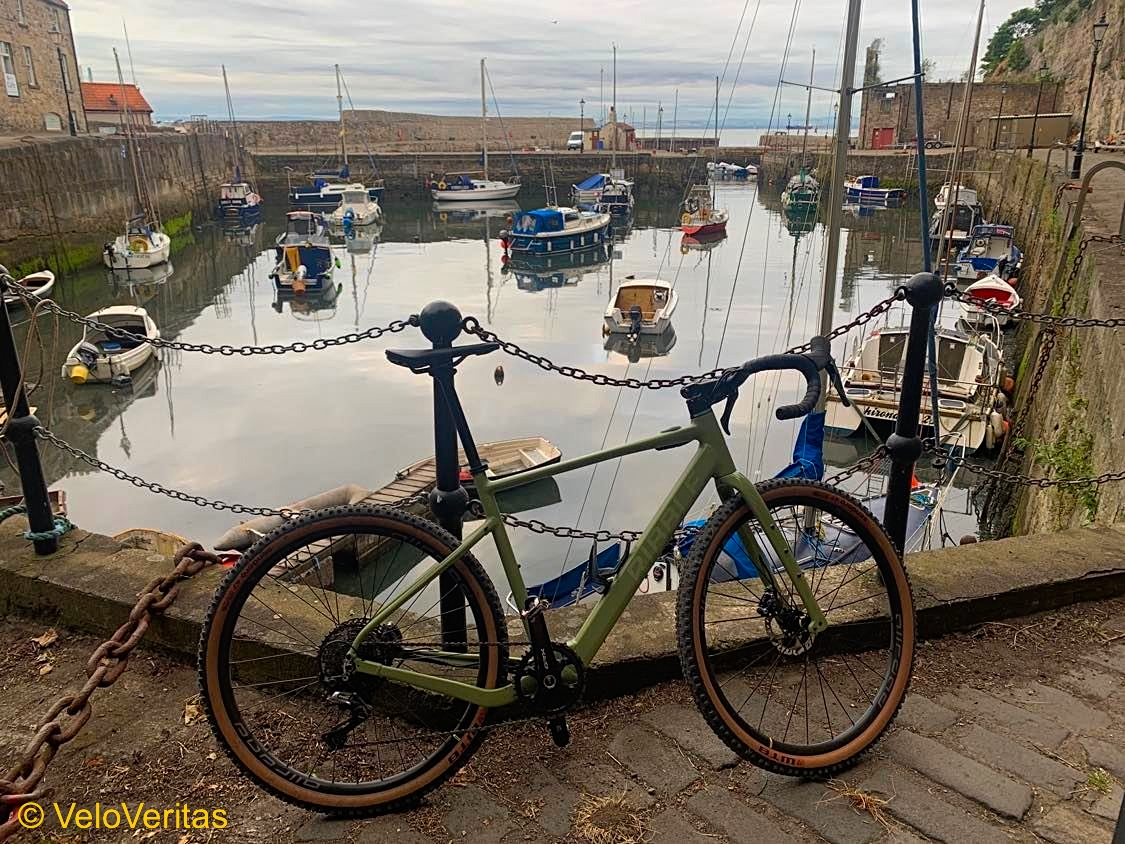
The roofless building on the right was intended as a whale oil processing facility to take advantage of neighbouring Kirkcaldy’s burgeoning whaling industry but the Earl of Roslyn vetoed that on the grounds that he didn’t want the smell of boiling blubber wafting up to his home at Dysart House.
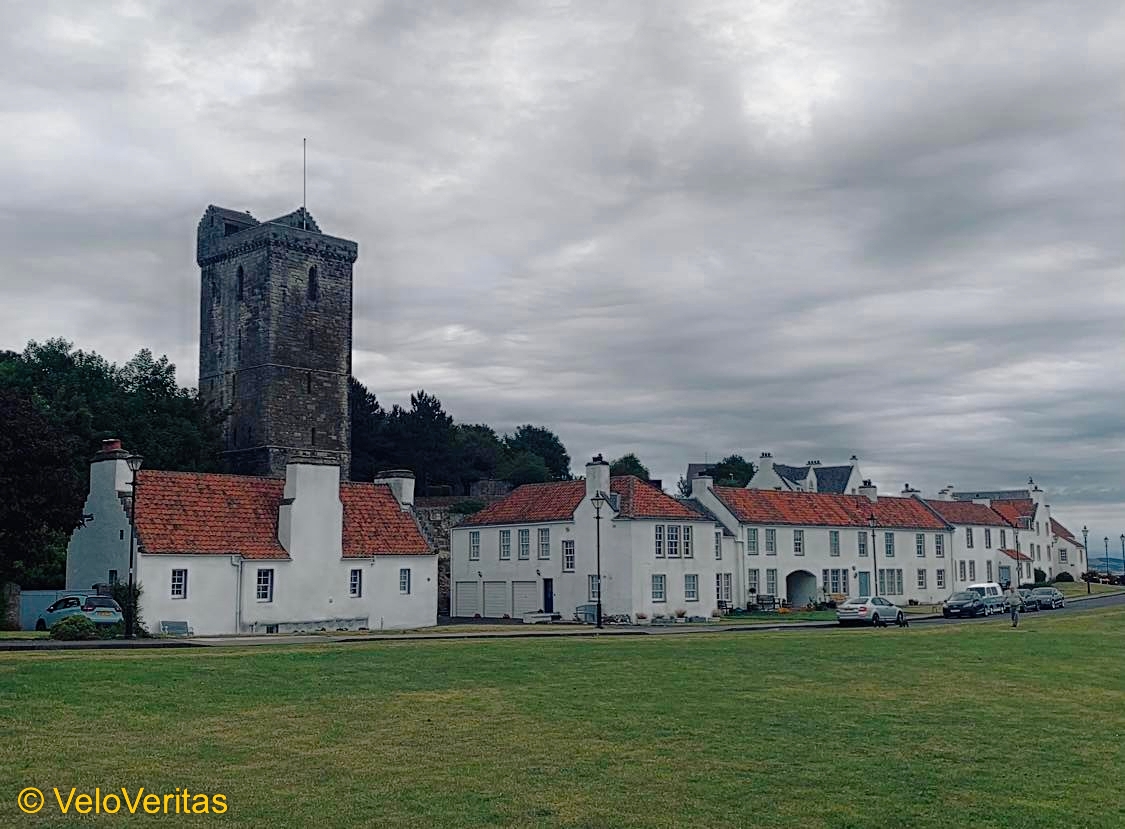
A little ways past the harbour lies the Pan Ha’ – a row of restored 16th to 18th century houses, once fishermen’s homes but now highly sought after.
Saint Serf’s tower behind the houses was part of the now gone church but was also a lookout tower to give warning of marauders coming up the Forth.
The Name Pan Ha’ stems from the days when there were salt pans here, big metal, sea water filled pans below which coal fires burned to evaporate off the water and leave the precious salt which was exported out of the harbour to England and the Low Countries.
The architecture betrays Dysart’s links with The Netherlands and Belgium with ‘crow step’ gables and red pantiles contributing to Dysart’s old nickname of, ‘Little Holland.’
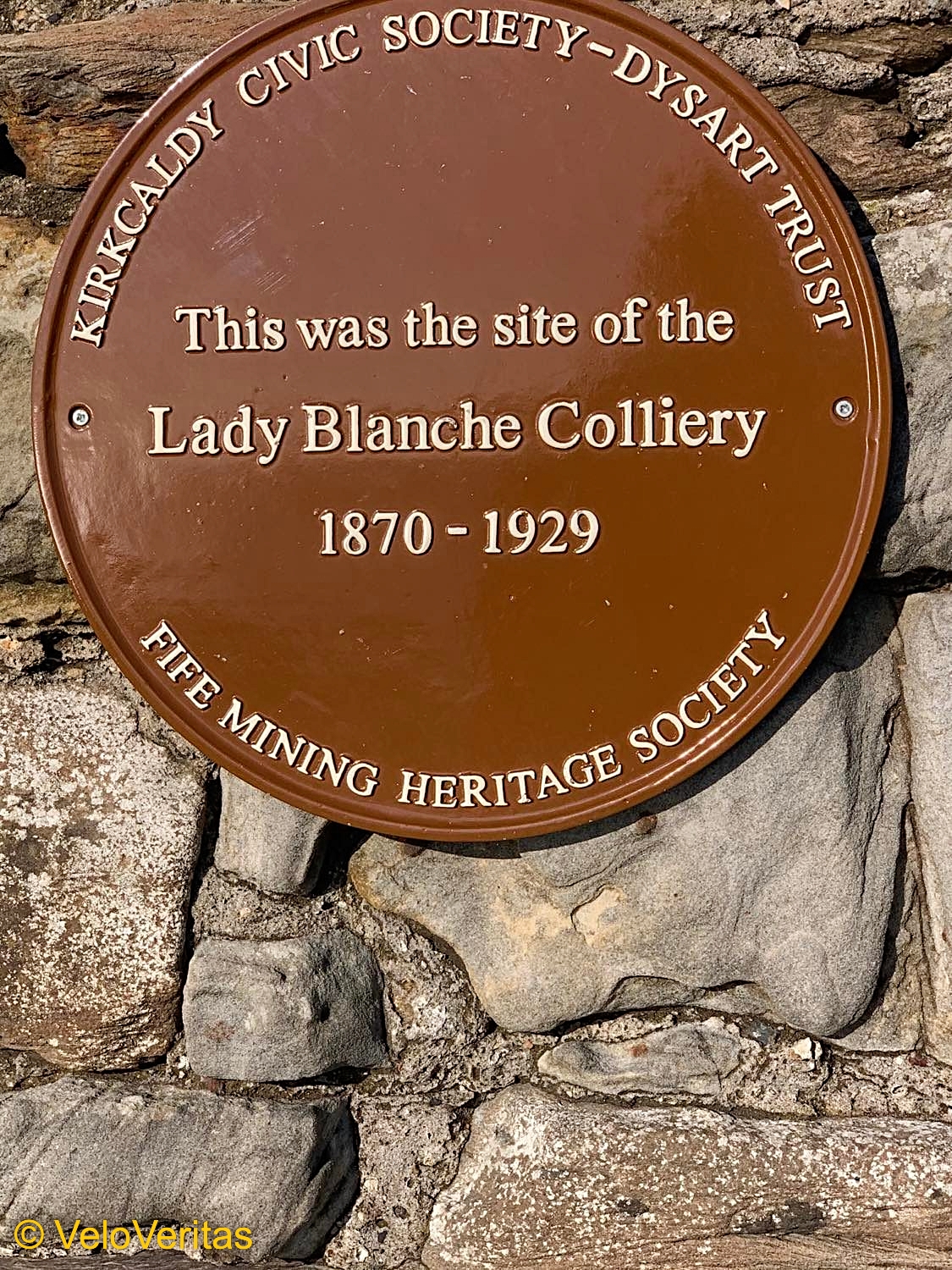
The Lady Blanche pit stood just along from the Pan Ha’ and a tunnel lead direct from the pit down to the harbour where it was loaded on to the ships for export to the Low Countries and Baltic.
The two flights of rough steps which take the Path up from sea level to higher ground aren’t a fun push – but I tell myself, ‘it’s all part of my work out.’
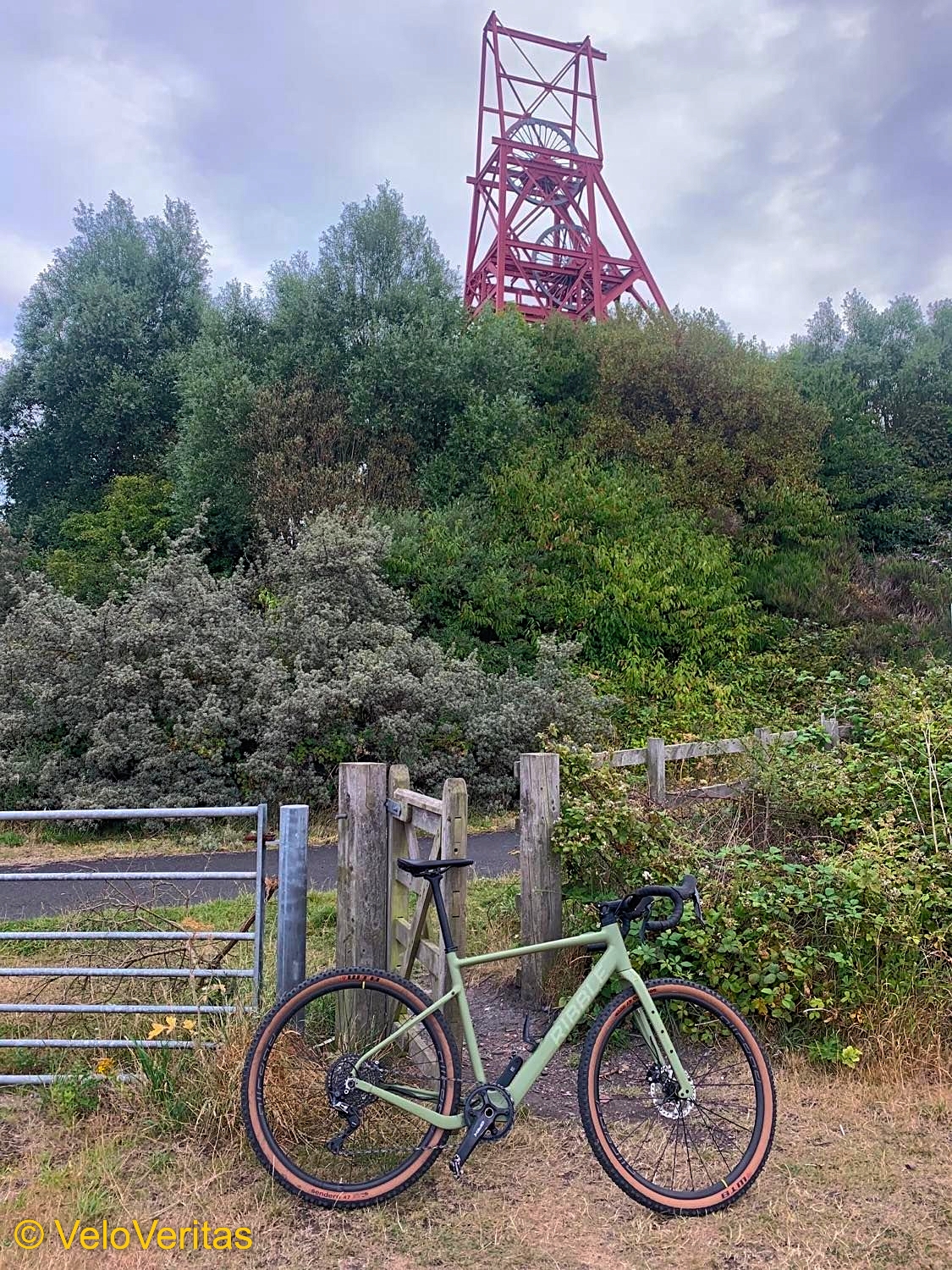
On the eastern edge of the village is another of the very few reminders of Fife’s once massive coal industry, the preserved winding tower of the Frances Colliery.
The Frances workings were linked below the Forth to the Seafield Colliery which stood at the western end of Kirkcaldy.
Nothing remains of Seafield, a housing scheme now sprawls over the site.
The fallout from the miners’ strike in the 80’s put an end to both pits however – Kirkcaldy and Dysart have never really recovered from the blow.
‘The pits’ in their heyday brought prosperity to The Kingdom but at a price; not just in terms of several beautiful beaches spoiled by thousands of tons of pit waste but also in human lives lost.
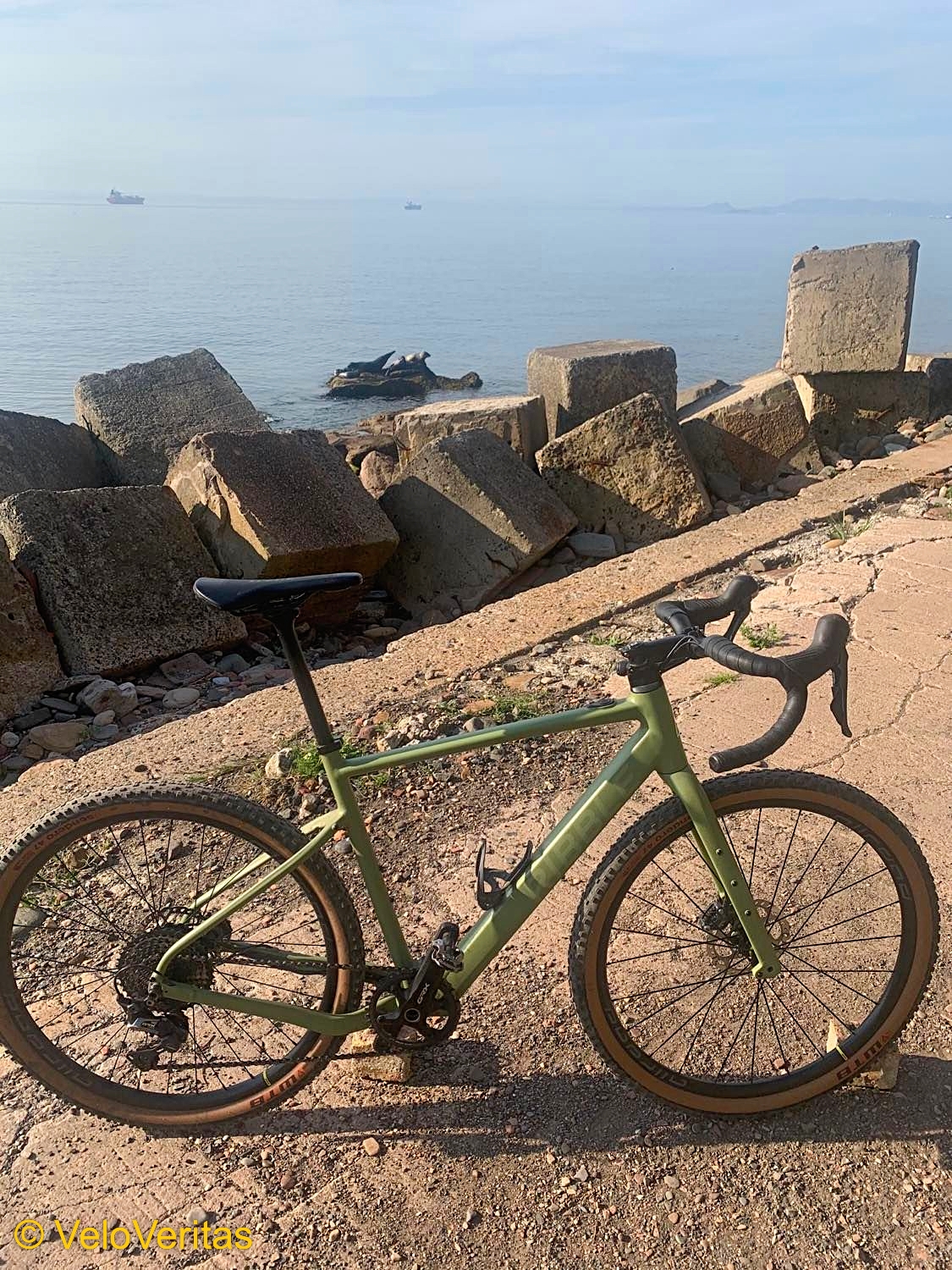
One of the special things for me about the Coastal Path is the rock outcrops approaching the village of West Wemyss where, when the tide is out the seals lay and sun themselves; recently the new pups have started to appear – a treat for the senses as they wiggle in the sunlight and sing their songs.
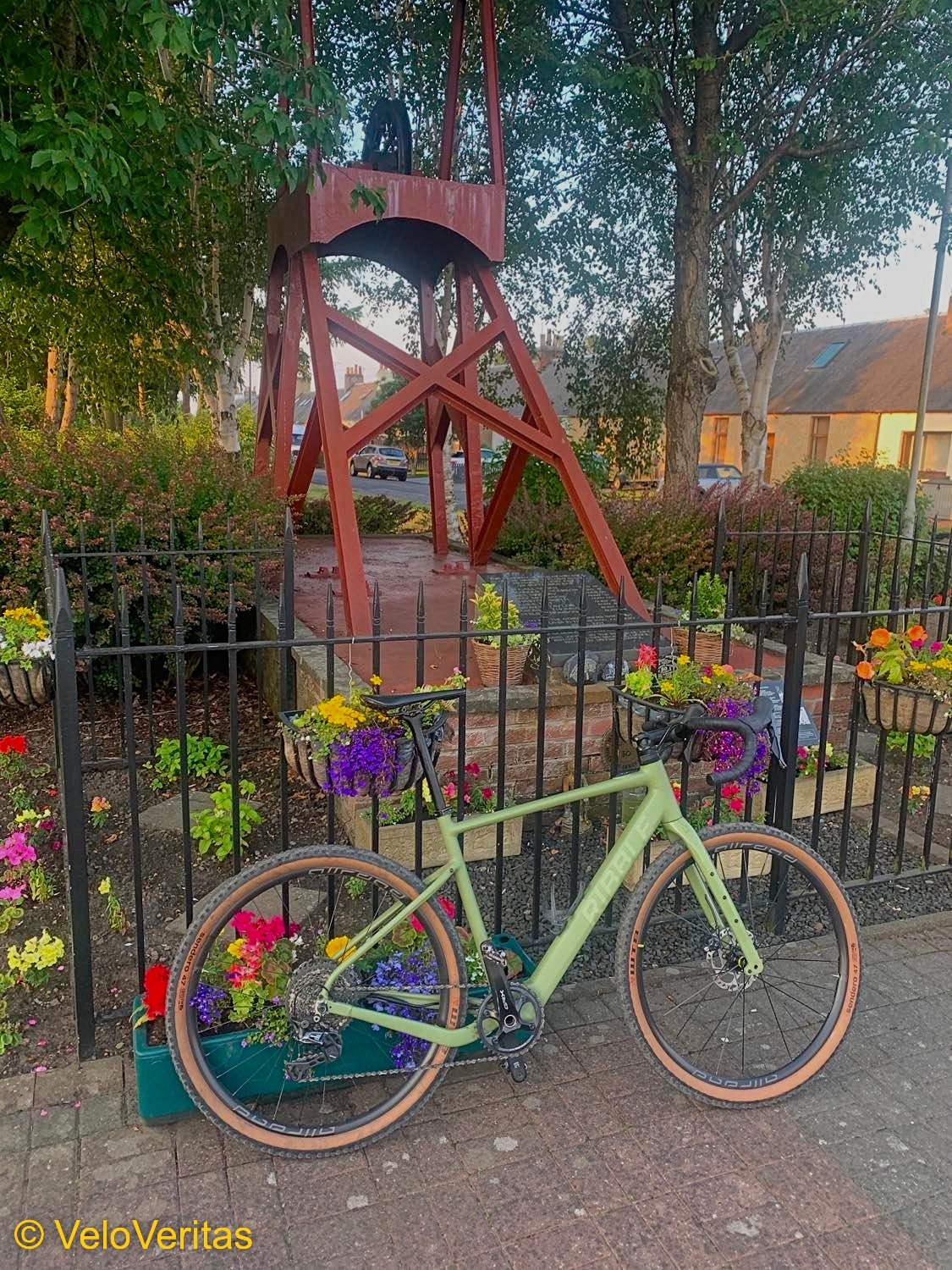
Approaching the village of East Wemyss is a flat area where stood the Michael Colliery.
A short distance in land from the Path, up in East Wemyss there’s a memorial to the nine men who lost their lives in the Michael Colliery disaster of 1967 when fire ravaged the seams.
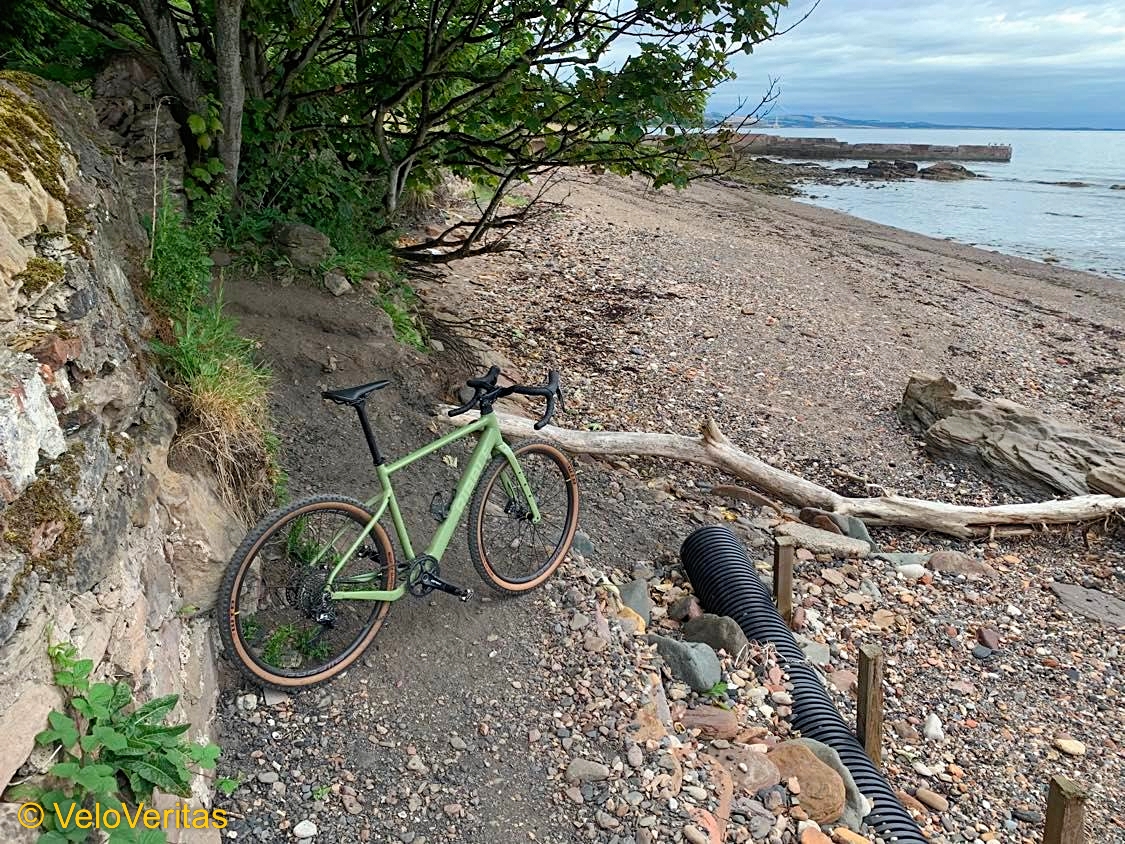
Back down on the Path some sections have succumbed to the force of the North Sea, erosion now a major problem for coastal areas but thankfully, Donald Trump has told us that we’re imagining global warming.
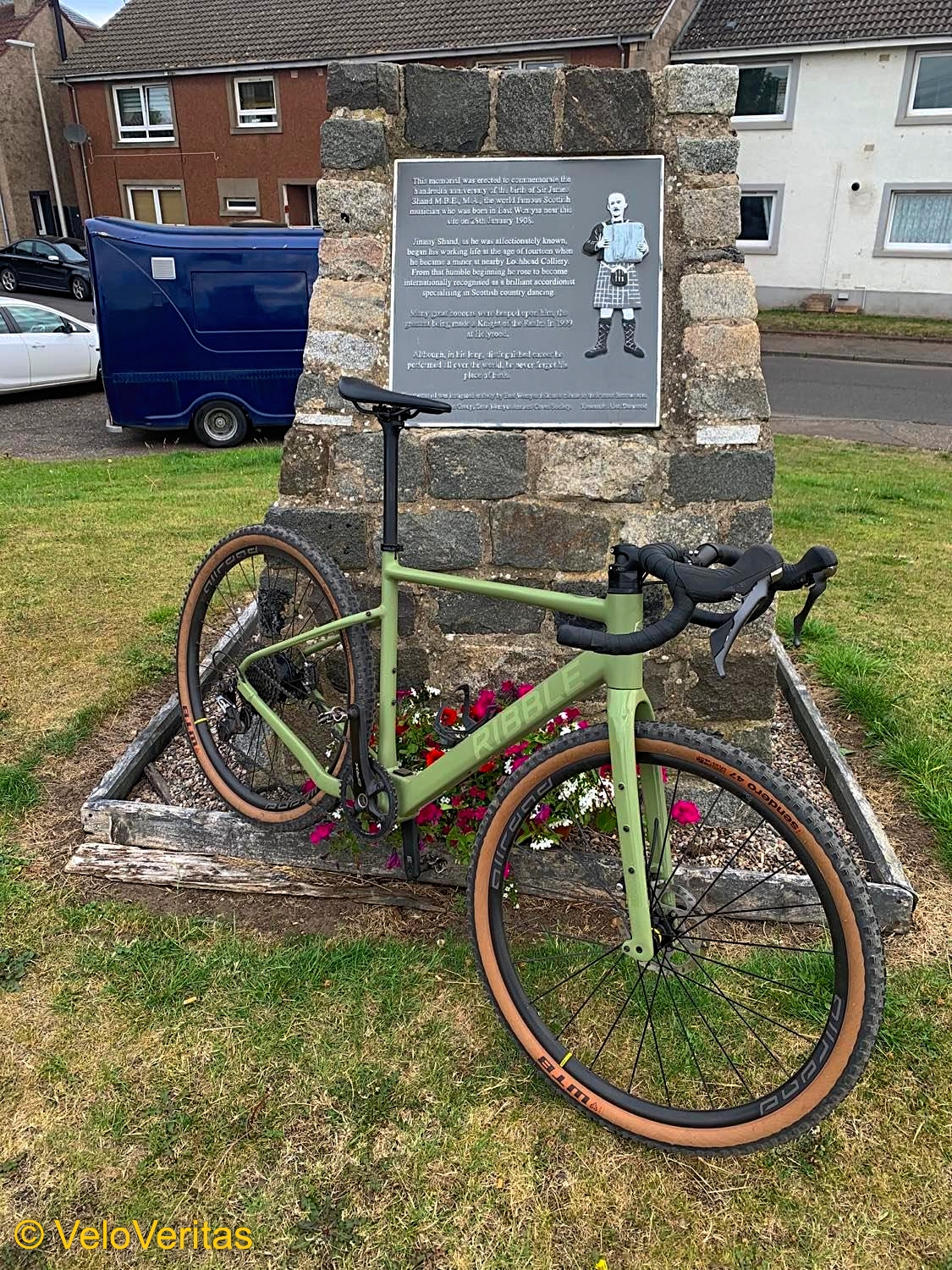
East Wemyss was the birthplace of accordion playing legend, Jimmy Shand – the village’s most famous son has his own memorial, just off the Path.
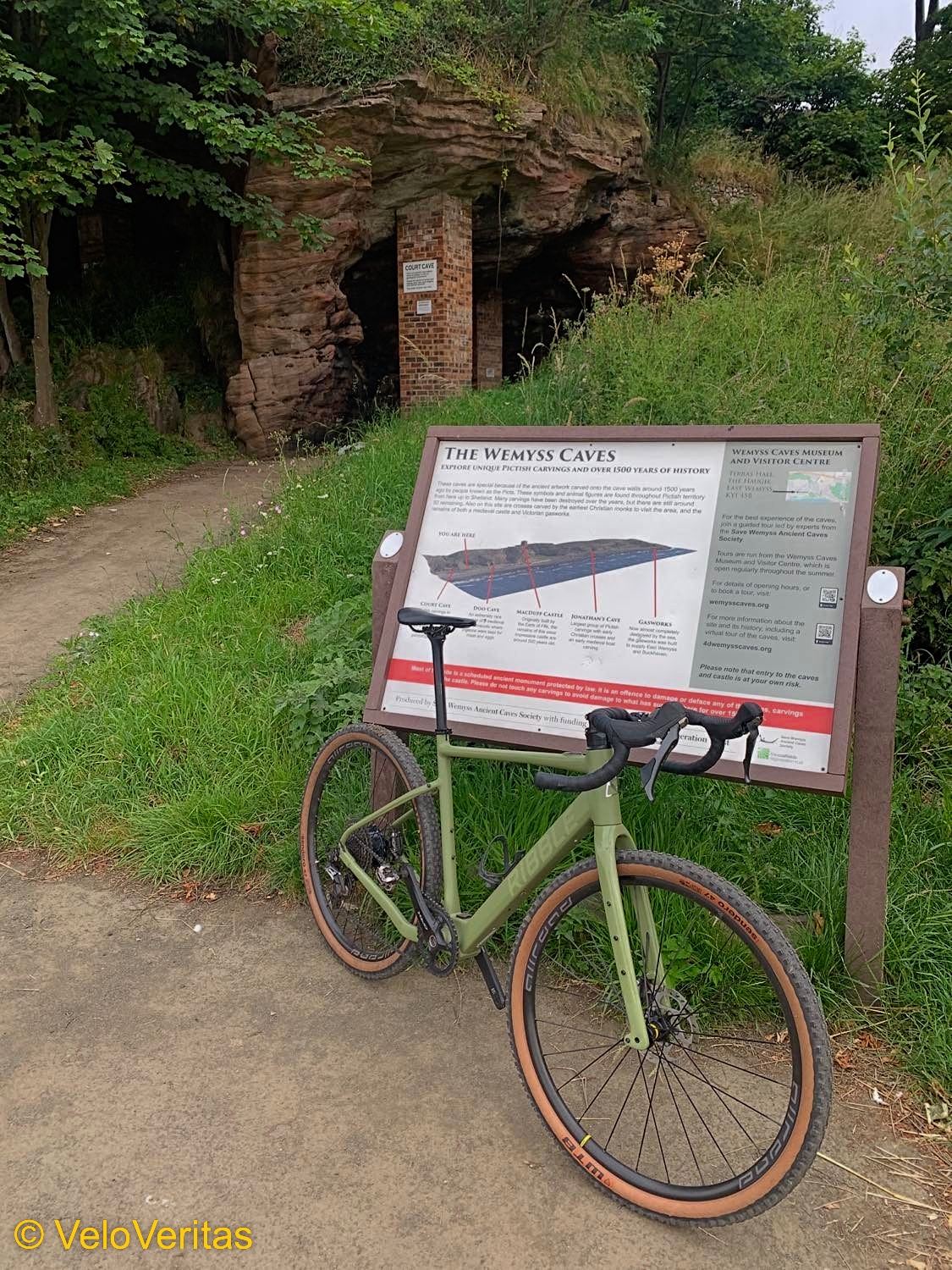
A little further east are the Wemyss Caves, some of which have Pictish art on their walls and one was a doocot cave for nearby MacDuff’s Castle.
It’s sad that so little has been done to preserve these historic gems.
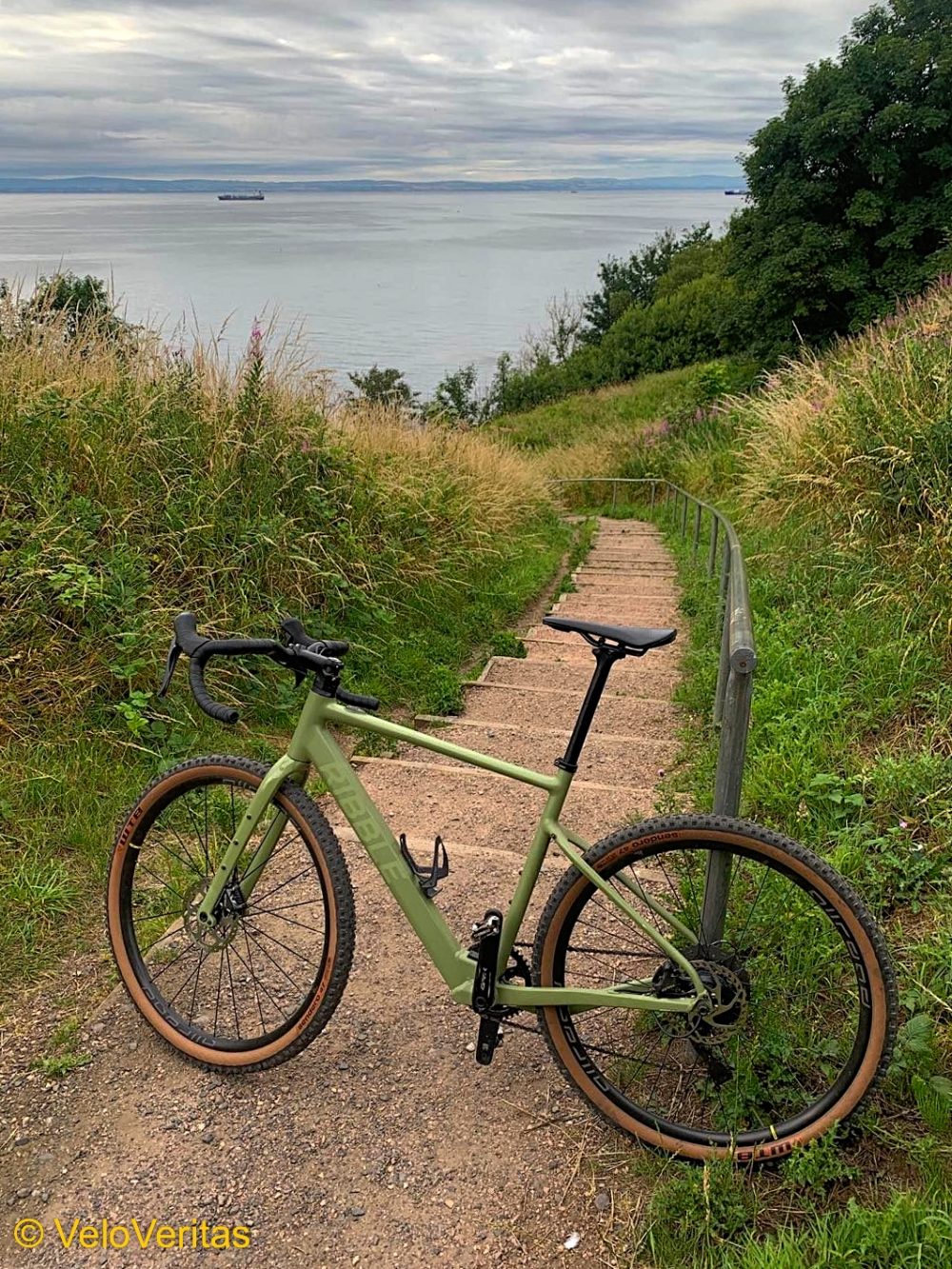
There are more stairs to finish this part of the Path up to MacDuff’s Castle; ‘back in the day’ there were no steps here, just a steep gravel path which was too steep for a big old boy like me to ride – going down was pretty wild though.
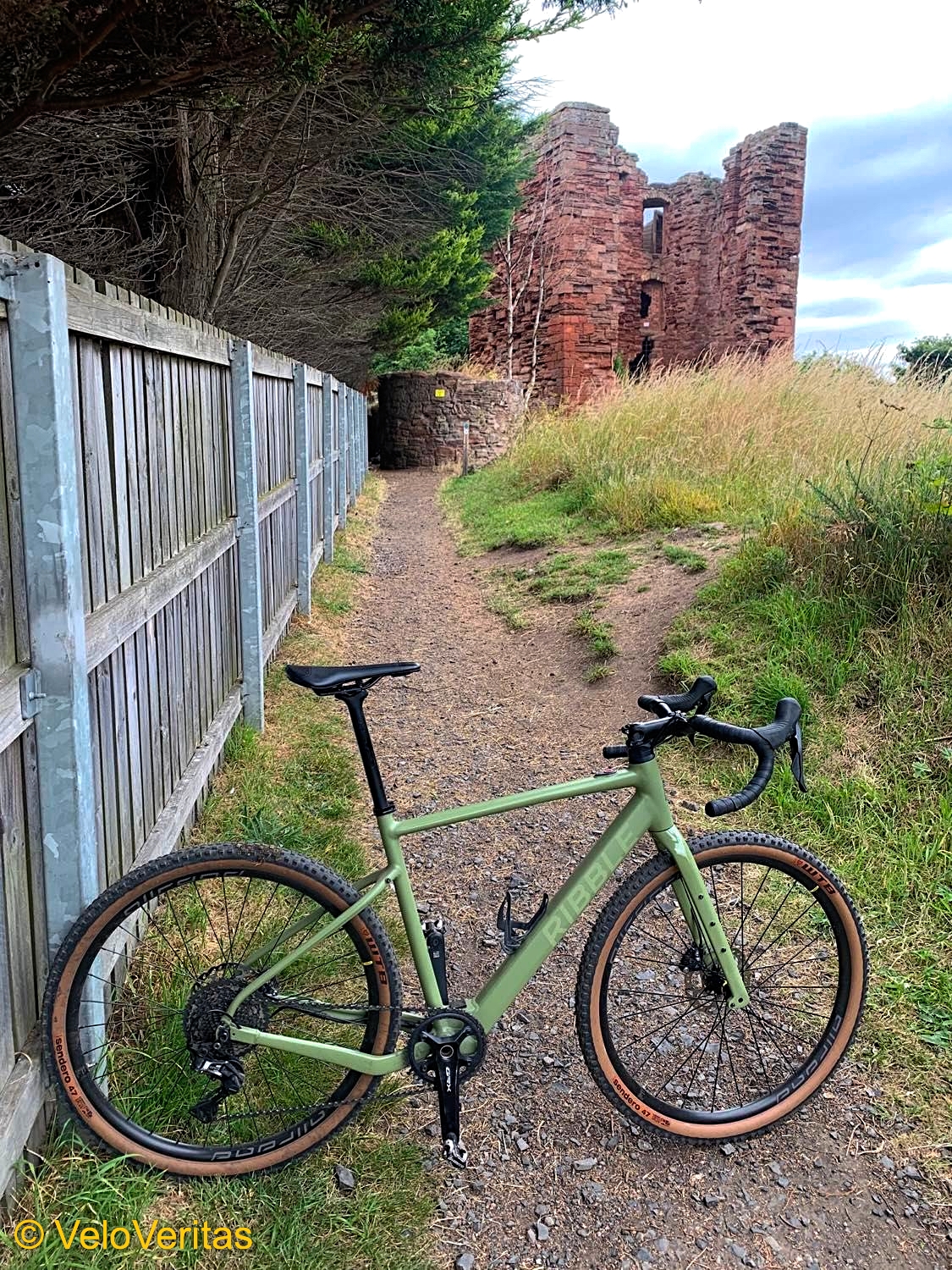
MacDuff’s Castle is in a sorry state now but was once home to the most powerful family in Fife in the middle ages, although nothing survives from this period.
The present ruins are the remains of the home of the Wemyss family, who lived here from the 14th century, and their successors in the 16th century.
With Secteur One of the Fife Coastal Path in the bag, it’s time to head back along the coast rode and home.
* * *
Check out Part Two and Part Three of Ed’s journey on the Fife Coastal Path.



